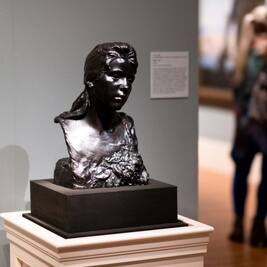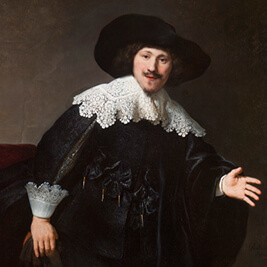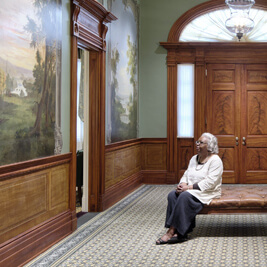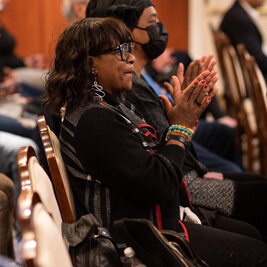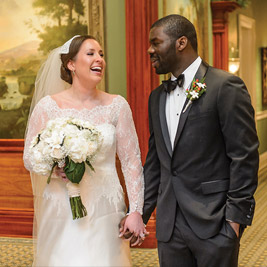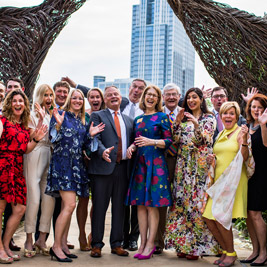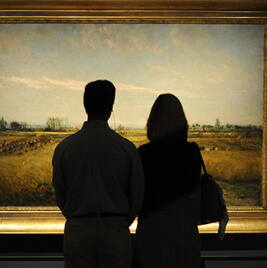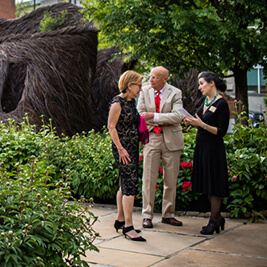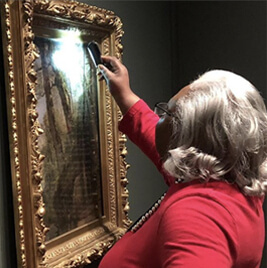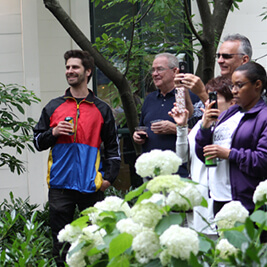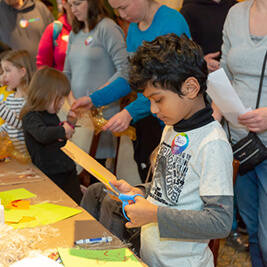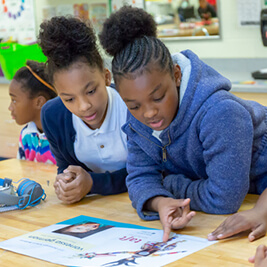- Do + See
- Dine + Host
- Give + Join
- Educate + Learn
Highlights from Modern Women/Modern Vision
Photography from the Bank of America Collection
Céline van Balen (Dutch, born 1965), Untitled, 1998, Chromogenic print mounted on aluminum
Céline van Balen’s sensitive depictions of Muslim girls from diverse immigrant communities in her native Netherlands evoke both historical documentary photographs and Northern Renaissance portraits. Van Balen portrayed these three young women against dark backgrounds at extremely close range, highlighting their unique features and creating face-to-face encounters with viewers. The girls’ neutral expressions and straightforward gazes suggest stoic determination, providing few clues to their emotions or interior lives.
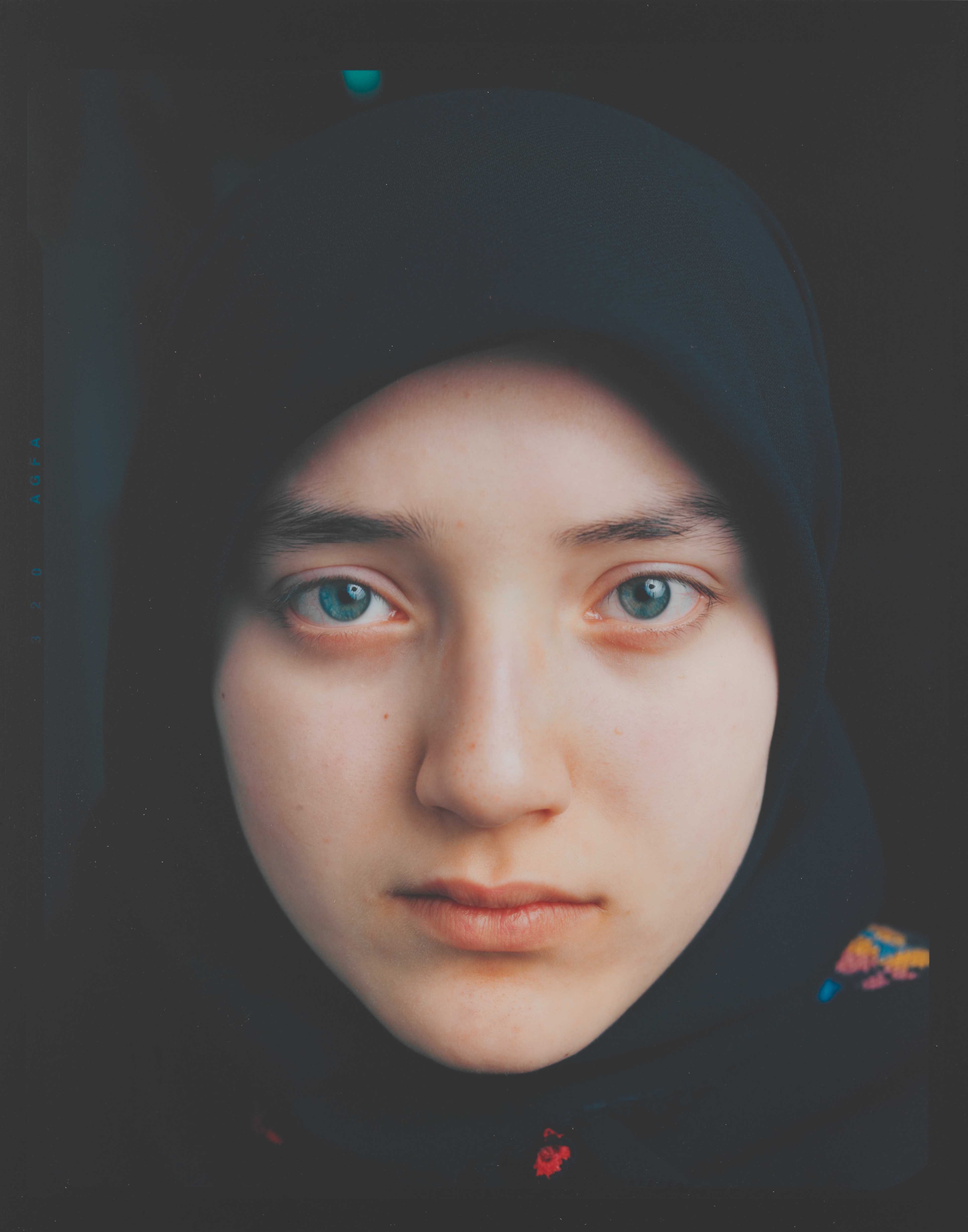
-
Esther Bubley (American, 1921–1998), Greyhound Shop, 1942, Gelatin silver print
At a time when women were expected to focus on marriage and motherhood, Esther Bubley defied convention and built a successful career as a freelance photographer. Bubley traveled the world, fulfilling assignments for Life magazine and corporate clients like the Standard Oil Company of New Jersey. For the latter, she documented the impact of long-distance bus travel on American life. With her handheld 35mm camera, she captured frank, compassionate images of passengers and employees, like this man working on tires at a Greyhound bus maintenance shop.

-
Graciela Iturbide (Mexican, born 1942), Fiesta de las velas (Festival of the Candles), Juchitán, Oaxaca, Mexico, 1992, 1986 negative; printed about 1992, Gelatin silver print
From 1979 to 1988, Graciela Iturbide photographed the traditional Zapotec Indian village in Juchitán, Mexico. She immersed herself in the community, which gave her intimate access to daily life and rituals. Iturbide admired the “big, strong, politicized, emancipated, wonderful women” who oversee village life, frequently positioning her camera beneath her subjects to communicate their power and assuredness. She described photography as “a pretext to know the world, to know life. To know yourself.”
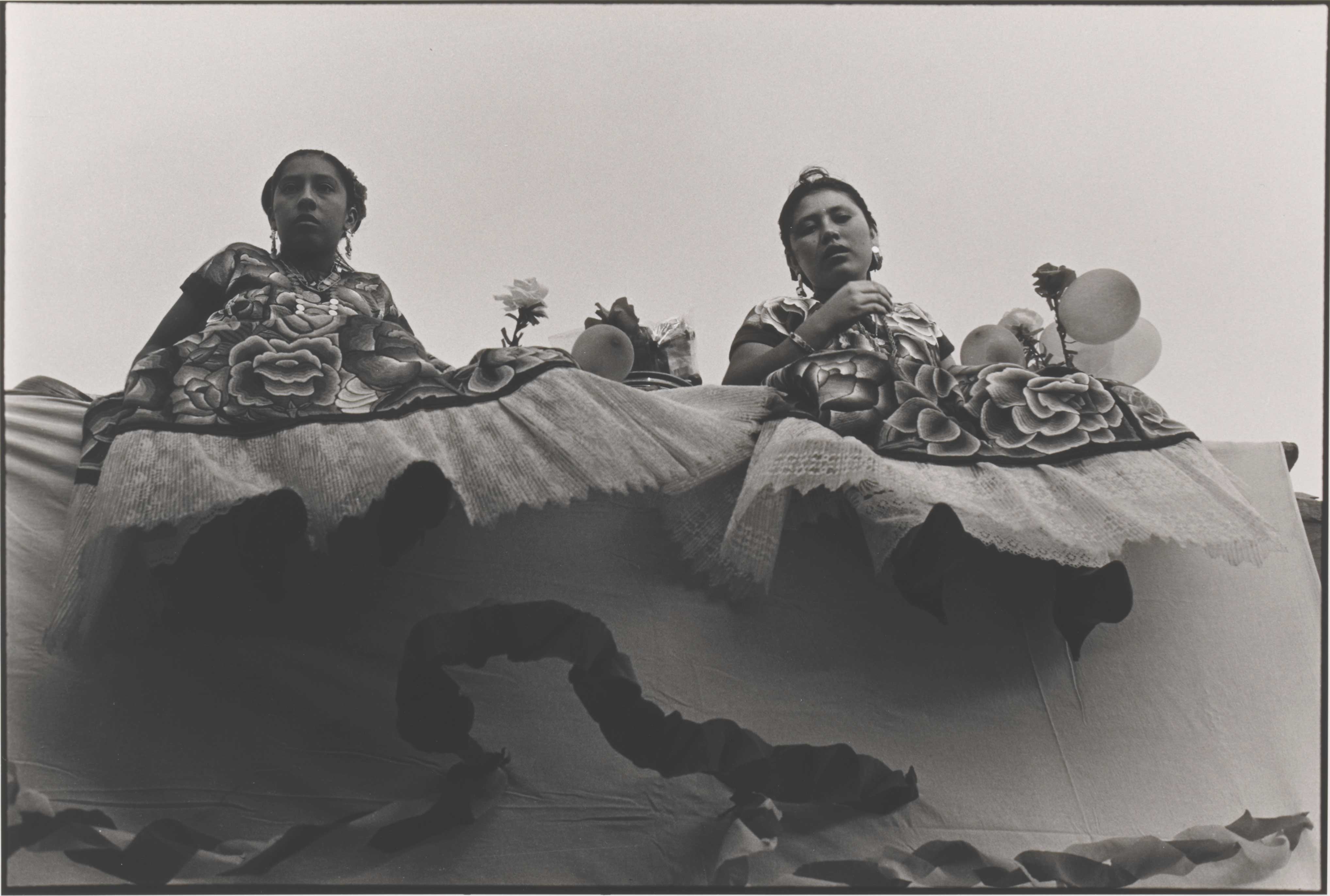
-
-
Sandy Skoglund (American, born 1946), Revenge of the Goldfish, 1981, Cibachrome print; artist’s print 7/30
Sandy Skoglund designs, sculpts, paints, and lights surreal environments, like this blue bedroom filled with oversized orange fish. With their intense colors and juxtapositions of unrelated figures, her works are often interpreted as fantasies or dreams. Skoglund taught herself photography to create lasting records of these temporary installations. She emphasizes the synthetic nature of the photographic medium by making an accurate image of the scene in front of the camera lens. Nevertheless, that view is one she created rather than found.
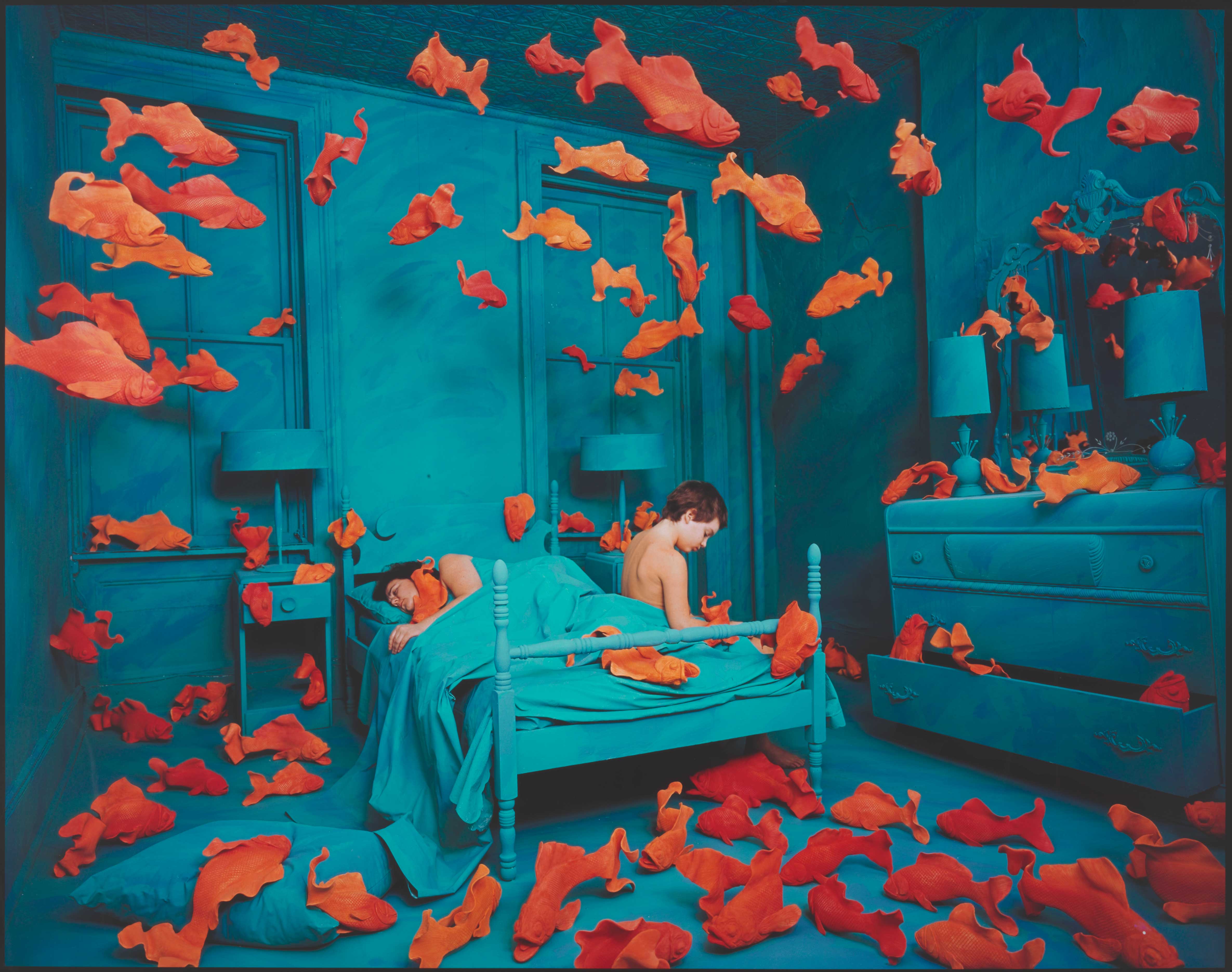
-
Carrie Mae Weems (American, born 1953), After Manet, from the series May Days Long Forgotten, 2001, 2001 negative; printed 2002, Color coupler print
Carrie Mae Weems depicts four young African American girls in summer dresses reclining on a lawn. The image recalls European paintings of fair-skinned goddesses and shepherdesses lounging in idyllic pastoral settings. Its title acknowledges Edouard Manet’s 1863 paintings Le Déjeuner sur l’herbe and Olympia. Both works feature nude White women gazing confidently at the viewer, the subject of Olympia accompanied by a Black maid. By inverting centuries-old artistic traditions, Weems calls attention to popular images that reinforce racial stereotypes.
Edouard Manet (French, 1832–1883), Olympia, 1863, oil on canvas. Musee d’Orsay, Paris
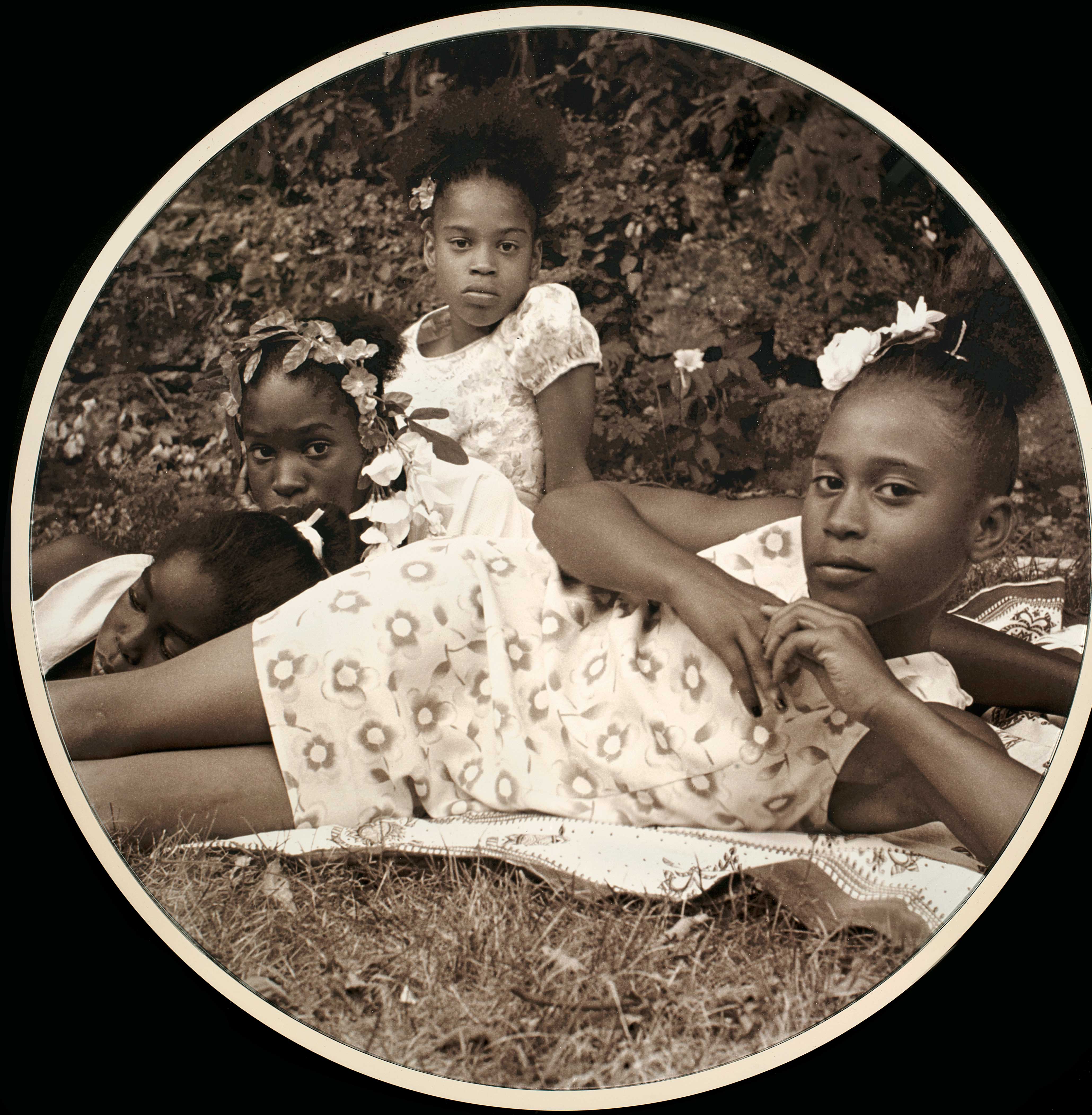
-

